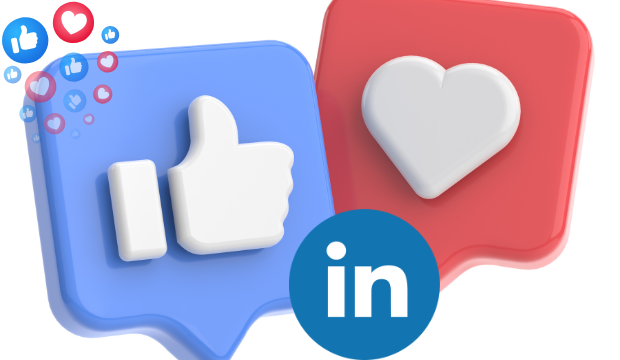Every 60 seconds the Internet hurls half a million Facebook updates, 350000 tweets, and about 66000 Instagram photos into the feed, enough raw content to refill the Library of Congress twice before lunch (Domo, Data Never Sleeps 11.0). Step onto that conveyor belt and you either jog just fast enough to stay visible or sprint until your brand pulls a hamstring. The real game isn’t “post every day or perish”; it’s learning exactly how the algorithm meters oxygen, when your audience actually inhales, and how to pace output so each piece compounds instead of cannibalizes.
Let’s chart the cadence that keeps you breathing easy while your competition gasps for air.
Why “more is better” became marketing gospel
59% of people say there’s already too much brand advertising in their feeds, and 52 % feel “exhausted” by self-promotional posts, as per The Social Media Consumer Report by Hootsuite. In other words, the original “post more” mantra is now the #1 reason audiences want the mute button.
In the early 2010s every social feed ran in strict reverse-chronological order, so extra posts simply pushed yesterday’s content farther down and multiplied brand visibility. Agencies raced to fill the pipe, and publishing dashboards bragged about “posting velocity” the way gyms flex rep counts. That habit stuck, even after ranking algorithms started favoring relevance over recency, because it was baked into calendars, staffing models and performance KPIs. Understanding that legacy mindset is critical: a lot of teams still default to daily output not because data says it works, but because inertia does.
Early social feeds were chronological, so every additional post grabbed another slice of attention. Algorithms now rank by predicted engagement, meaning each extra post competes with (and can throttle) the one before it. Socialinsider’s 2025 benchmark study sums it up neatly: “post too often and engagement drops; post too little and you disappear.”
Platform physics: the half-life test
As per Scott M. Graffius’ latest 2025 study on the Lifespan (Half-Life) of Social Media Posts, a single YouTube upload stays in algorithmic circulation 295x longer than a tweet (8.83 days vs. 43 minutes), the digital equivalent of comparing a marathon to a 200-meter sprint.
Each network has a built-in decay curve, the moment a post’s initial engagement wave crests, its reach falls off a cliff. That “half-life” is radically different: minutes on X, hours on Facebook, days on LinkedIn, weeks on YouTube. If you post faster than the algorithm can finish distributing a piece of content, you’re effectively cutting your own airtime. Treating half-life like gravity lets you engineer frequency instead of guessing; ignore it and you end up fighting physics with willpower.
Half-life = the time it takes a post to earn 50 % of its total impressions.
The shorter the half-life, the faster you can justify higher frequency:
| Platform | Median half-life | Practical takeaway |
| X / Twitter | 43 min | Multiple daily posts keep you visible |
| 76 min | 1-2 quality posts per day is plenty | |
| 19.8 h | Every other day (5x week) sustains reach | |
| 24 h | Once a day max; more can hurt reach | |
| YouTube (long form) | 8.8 days | Weekly consistency beats daily rush |
What the latest benchmarks actually say
Despite Instagram putting Reels front-and-center, 2025 data shows old-school carousels now out-perform Reels for engagement across all industries. The format everyone thought was dying just stole the crown. (2025 Social Media Industry Benchmark Report by Rival IQ)
Benchmarks cut through hunches by showing what most brands are really doing (and how audiences actually respond). They reveal useful contradictions:
- Instagram engagement is declining overall, yet Reels output is climbing because short-form video still outperforms static images.
- LinkedIn rewards consistency over volume, but B2B pages posting twice a day still exist and can work if both posts hit different geographic peaks.
Reading the tables behind the headlines stops you from copying sample sizes of one.
- Brands publish 20 posts per month (10 images, 4 carousels, 6 Reels) – roughly five per week. (Socialinsider)
- Engagement has fallen 28% YoY, so format diversity matters more than raw volume. (Socialinsider)
- Average brand output: 47 posts per month (1.6 per day). (Socialinsider)
- HubSpot’s State of Social shows 35% of marketers still post multiple times per day, but most SMB pages see optimal clicks at 1-2 posts daily
X / Twitter
- Rival IQ puts median tweet frequency at 3-4 per day across industries. (Buffer)
- Internal creator tests indicate posting more than once in 24h can suppress reach by 25%. (LinkedIn)
- An Annual LinkedIn Algorithms Research study by Bliss found reach per post drops if you post again within 18h.
YouTube
- Shopify’s video study: channels with weekly uploads receive 1.5x more algorithmic recommendations than irregular uploaders of similar quality.
Blogging (owned media still matters)
- Companies publishing 16+ blog posts/month generate 3.5x more traffic and up to 4.5x more leads than those at 0-4 posts. (HubSpot)
Quality vs. quantity: the saturation curve
Brands that blow past their “sweet-spot” cadence see engagement rates plunge once they post more than the optimal frequency. More posts literally make every post worse.
Imagine engagement as water poured into a sponge: at first it soaks in, then it leaks out.
Audiences have a hard ceiling on how many genuinely helpful touchpoints they can absorb from a single source in 24 hours. Once you cross that threshold, every additional post dilutes average performance and, even worse, erodes trust because the feed starts to feel like spam.
Recognizing this saturation point is the difference between compounding and cannibalizing results.
Frequency only outperforms when quality remains constant. Single Grain’s meta-analysis shows repetitive, low-value posts lower engagement and follow rates even when you keep posting cadence steady.
A decision framework you can steal
When Buffer halved its Facebook output, weekly reach tripled from 44k to 150k and daily engagements doubled, proof that posting less can produce 300% more reach when quality comes first.
Most “ideal cadence” advice fails because it skips the decision science. A robust framework forces you to audit real half-life data, model capacity, run controlled frequency sprints and define numeric guardrails (your personal floor and ceiling). It’s less sexy than “just post daily,” but it turns frequency into an adjustable KPI, one you can defend in a quarterly review instead of shrugging about “the algorithm.”
- Audit your half-life
- Pull 90-day data per platform. Note when each post hits 50% of its lifetime engagement.
- Pull 90-day data per platform. Note when each post hits 50% of its lifetime engagement.
- Find your minimum viable frequency (MVF)
- MVF = (24h ÷ half-life) × buffer (0.8 for safety).
- Example: If your Instagram half-life is 22h → MVF ≈ ((24/22) × 0.8) ≈ 0.9 posts/day → 5 posts/week.
- MVF = (24h ÷ half-life) × buffer (0.8 for safety).
- Layer capacity reality
- Map how many high-quality assets you can create weekly without stretching resources or resorting to filler.
- Map how many high-quality assets you can create weekly without stretching resources or resorting to filler.
- Stress-test with experiments
- Run 30-day sprints where you +50% and –50% frequency, holding creative quality constant.
- Track reach/post, engagement rate, follower growth and conversion.
- Run 30-day sprints where you +50% and –50% frequency, holding creative quality constant.
- Set your “floor” and “ceiling”
- Floor = frequency where reach dips > 10%.
- Ceiling = point where engagement/post drops > 15% or you miss quality benchmarks.
- Floor = frequency where reach dips > 10%.
Advanced tactics to multiply output without spamming
Marketers who atomize a single “hero” asset into micro-formats can double total audience reach without creating anything new from scratch, according to Stratabeat’s 2024 atomisation study.
Modern distribution isn’t about shovelling more content; it’s about re-scoring the same idea across formats and moments. Think atomizing a webinar into quote graphics, 9:16 clips, a LinkedIn poll and an SEO-rich blog, all sequenced to extend the conversation rather than restart it. The result feels omnipresent to the audience yet requires only marginal creative lift because you’re leveraging narrative momentum instead of reinventing it every day.
- Atomize long-form: slice a webinar into Shorts/Reels/Carousels.
- Rotate formats: mix fast-decay (tweets, stories) with slow-burn (blogs, YouTube, LinkedIn articles).
- Engagement-weighted scheduling: prioritize posts that historically trigger > 75% of your average interactions during high-activity slots (Sprout’s 10 a.m.–1 p.m. window is a safe starting point).
- Content clusters: Release a hero piece then surround it with micro-posts over 7-10 days, extending shelf-life without new creation.
When daily posting does make sense
Sports teams tweet so often they average 0.073 % engagement, nearly 5× the all-industry median of 0.015%, showing that high-tempo niches can thrive on relentless cadence. (Sprout Social)
There are edge cases where rapid-fire cadence outperforms restraint: real-time news accounts riding a developing story, early-stage creators feeding algorithms that reward high test volume, or limited-time retail events where frequency combats peak competition. The common thread is context: urgency or discovery upside outweighs the risk of fatigue.
If your brand lives in those pockets, daily posts aren’t reckless, they’re table stakes.
| Scenario | Why daily works | Caveat |
| High-tempo news & culture accounts | Feed relevance outruns fatigue | Requires newsroom-style resources |
| Early-stage creators on TikTok/X | Algorithm rewards volume + experimentation | Quality dips hurt you later |
| Time-bound launches (e.g., Black Friday) | Frequency combats crowded feeds | Stop once promo ends, or watch engagement slide |
Hootsuite’s 2025 Social Trends confirms brands spike to 47 posts/month on Facebook during peak retail seasons but resume normal cadence afterward.
The winning frequency of social media posting
63.9% of the planet now uses it, spending 2h 21m a day across 6.8 networks. Your cadence choice is one small lever inside a gargantuan, always-on attention economy. (Smart Insights)
Cadence is not a moral issue; it’s a math problem crossed with audience empathy. Post only as fast as you can maintain value, let platform physics guide spacing, and treat benchmarks as dashboards rather than dogma. When you view frequency through that lens, “daily” stops being a yes-or-no question and becomes a lever you pull with purpose.
Posting every day isn’t inherently good or bad.
The winning frequency:
- Matches your platform’s half-life so posts live long enough to earn ROI.
- Preserves quality and narrative cohesion so each touchpoint adds value.
- Fits your team’s capacity to avoid burnout and sloppy creativity.
- Evolves with performance data – treat cadence as a KPI, not a rule carved in stone.
Dial it in, measure relentlessly, and remember: attention is rented, but trust is earned post by post.



